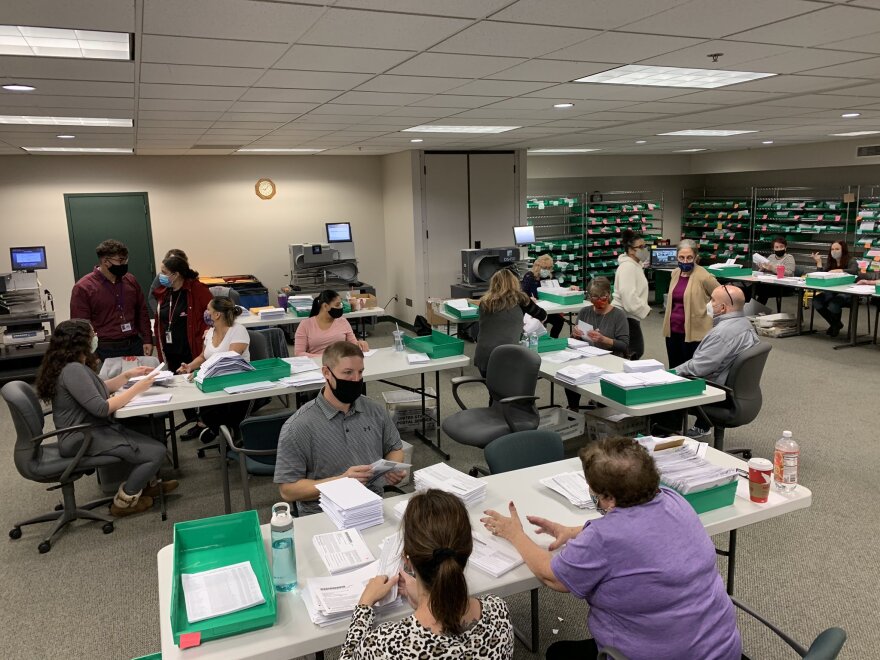BETHLEHEM, Pa. - As candidates and election observers try to make sense of complex Election Day results, one thing is clear—Northampton County lived up to its reputation as a political prognosticator once again.
Unofficial election results show county voters backed the winners of the three top races by margins in line with their overall results. Atty. General Josh Shapiro, a Democrat, carried Northampton County by about 13 points; he defeated state Sen. Doug Mastriano by a little less than 14 points statewide, according to state figures as of Friday morning. Republican Senate candidate Mehmet Oz lost the county by just under 5 points while his opponent, Lt. Gov. John Fetterman, won the state by nearly 4 points.
The same thing happened in Pennsylvania’s 7th Congressional race. Democratic incumbent Susan Wild bested Republican challenger Lisa Scheller in the county by about 2.5 points. Across the entire four-county district, Wild won by 1.6 points.
“I say this every cycle. It’s a crazy good bellwether for Pennsylvania,” said Christopher Borick, director of the Muhlenberg College Institute of Public Opinion.
- Northampton County results reflected statewide races, reinforcing its status as a political bellwether
- Voters here broke for Democrats, who broke precedent and did well in a midterm election
- Political observers blamed poor mail-in ballot results, Donald Trump and abortion rights for foiling Republicans
Between an urban core that favors Democrats, deeply Republican rural communities and highly competitive suburbs, Northampton County has proven to be a microcosm of Pennsylvania as a whole. And with Pennsylvania becoming a critical swing state in national politics, locals should get used to major candidates and their proxies visiting the region.
“There’s a pretty big campaign coming up in two years. I can only imagine Northampton County is going to be a premier location in that cycle,” Borick said.
Breaking the midterm mold
Tuesday’s election largely ignored historic norms for midterm elections. For the past 80 years, the party in control of the White House tends to lose seats in Congress. As of Thursday afternoon, it was still unclear if Republicans would make the handful of gains they needed to control both the U.S. House and Senate. Even if they do pick them up, it’s not the sweeping victory Republicans were hoping for.
“We should not be sitting here on a Thursday after the midterm election: With a president who has performed poorly by all objective measures? With an economy that’s not doing well by all objective measures?” said Northampton County Republican Committee Chair Glenn Geissinger.
While it’s rare for the status quo to hold up, it’s not unheard of, Borick said. Republicans gained seats in 2002 due in large part to the Sept. 11 attacks the year before. Democrats cut into the Republican majority in 1998 due to backlash against President Bill Clinton’s impeachment. Something big needs to upset the political status quo, and the Supreme Court’s decision to overturn Roe v. Wade in June fits the bill, Borick said.
“In the end, I think its impact was significant. It gave Democrats something to energize them in a year where they didn’t have a lot of energy. It brought some younger voters in that were not very energized,” he said.
Borick and Charlie Dent, a Republican who formerly represented the Lehigh Valley in Congress, said Donald Trump was another factor. While former presidents often stump for candidates in the general election, Trump backed 2020 election deniers in the GOP primaries. That boost helped them reach the November ballot, but most Trump-backed candidates in competitive states lost their races.
Mastriano, who attempted to overturn Pennsylvania’s 2020 election results, is a prime example. He received Trump’s endorsement in May, but his extreme policies saw moderate Republicans like Dent come out against him. The uncompetitive governor’s race likely harmed down-ballot candidates like Scheller, who came within a few points of winning, Dent and Borick said.
“You had Donald Trump asserting himself into the midterms. Throughout the country, he got involved in candidate selections in a way that was not very helpful,” said Dent, who has been a vocal critic of the former president.
Matt Munsey, chair of the Northampton County Democratic Committee, said his party was able to make in-roads with independents and even some Republicans thanks to the extreme policies Mastriano and other Republicans adopted. Democrats were able to connect with voters concerned about the future of abortion rights, gay marriage, Social Security and Medicare—issues that don’t neatly follow partisan divides.
“The Republican Party has become so extreme. In some sense, we do a disservice to treat it like normal politics anymore,” Munsey said.
Republicans lost badly on mail-in ballots
Geissinger, the Republican committee chairman, defended Mastriano, saying the quality of the candidates was not the issue. Instead, he pointed to divisive, bruising primaries. It left even loyal Republican voters less than enthusiastic about their options.
“We as a party nationally, statewide, did not do what we needed to do. We did not put up the right messaging that we needed to put up to the people of America,” he said.
The shortcomings extended locally, too, he said. He had been optimistic on Election Day after seeing high turnout at polling places in Republican strongholds and less enthusiasm in Democratic bastions like Bethlehem. What he didn’t account for was the party’s woeful results with mail-in ballots.
“I tell you, we got absolutely crushed,” Geissinger said.
Democratic voters have embraced mail-in ballots more than their Republican counterparts the past three years. This year, 66.7% of requested mail-ins went to Democrats, 20.5% of mail-in ballots went to Republicans and the remaining 12.7% went to voters of other affiliations.
Both parties should expect to improve their margins as independents split for their preferred candidates. But that didn’t happen in Northampton County, where Scheller picked up just 21.2% of all mail-in ballots cast. It was far worse for Mastriano, who only gathered 14.3% of the mail-in vote, meaning a sizable number of registered Republicans abandoned him.
Geissinger said the solution may be doing more outreach sooner. Tens of thousands of local voters are casting their ballots weeks before Election Day. Mail-in ballots are here to stay, and local party leaders like himself need to make sure the electorate receives the GOP’s pitch by the time they fill out their ballot, he said.
“We cannot continue as a party to start out in the hole because of mail-in ballots,” he said.


